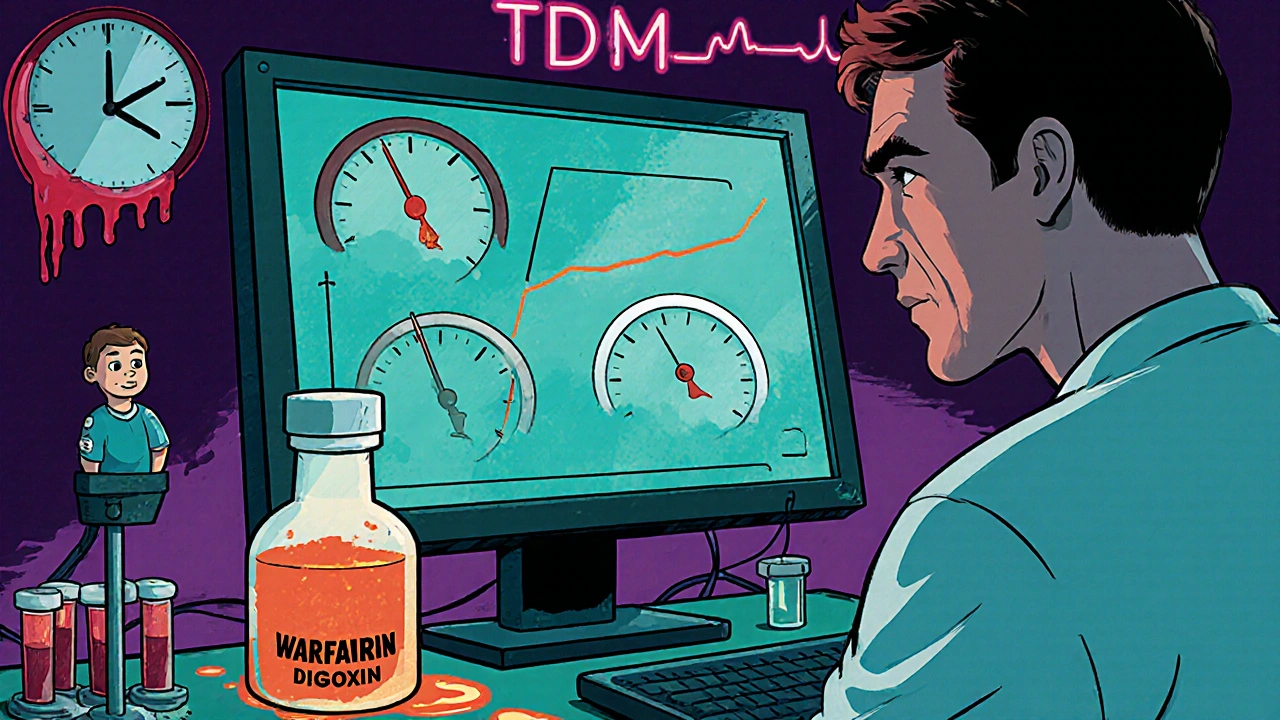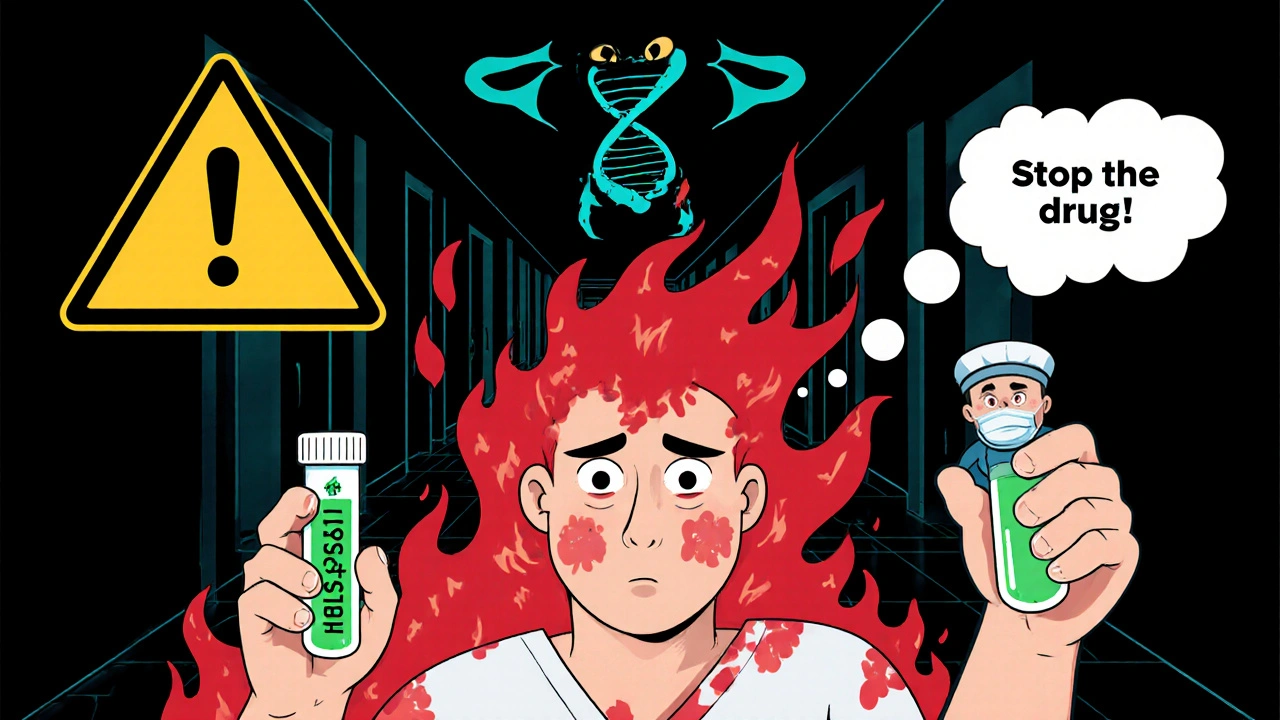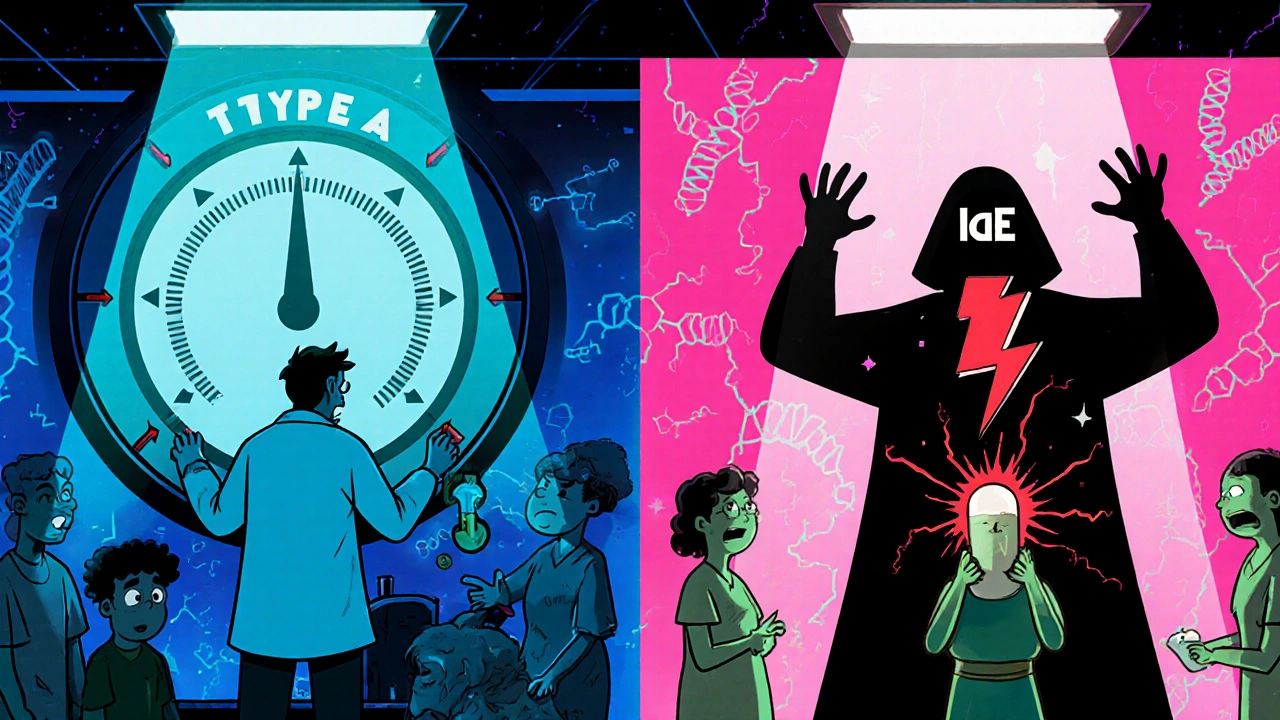Dose-Related vs Non-Dose-Related Side Effect Predictor
Assess your patient's side effect
Analysis Result
Ever wondered why some drug reactions magically disappear when you cut the dose, while others strike out of nowhere? The answer lies in the age‑old split between dose-related side effects and non‑dose‑related side effects. Understanding this split isn’t just academic; it decides whether you tweak a dose, swap a drug, or put a patient on a lifelong avoidance plan.
What the Classification Means
Back in 1977, Rawlins and Thompson introduced the Type A/Type B framework that still underpins pharmacovigilance. Dose-Related Side Effects are formally known as Type A (or "augmented") reactions. They account for roughly 80% of all adverse drug reactions (ADRs) and follow the classic dose‑response curve: higher plasma levels, stronger effect, stronger toxicity. Non-Dose-Related Side Effects are Type B (or "bizarre") reactions. They are immune‑mediated or idiosyncratic, popping up regardless of how much drug you give, once the immune system is sensitized. The split guides everything from prescribing to monitoring.
Key Characteristics at a Glance
| Feature | Dose‑Related (Type A) | Non‑Dose‑Related (Type B) |
|---|---|---|
| Incidence | ≈70‑80% of ADRs | ≈15‑20% of ADRs |
| Predictability | Highly predictable, follows pharmacology | Unpredictable, often immune‑mediated |
| Typical severity | Usually mild‑to‑moderate; mortality <1% | More severe; mortality 5‑10% |
| Common examples | Hypotension from antihypertensives, hypoglycaemia from insulin, serotonin syndrome, warfarin‑related bleeding | Anaphylaxis to penicillin, Stevens‑Johnson syndrome, drug‑induced liver injury |
| Management | Dose adjustment, therapeutic drug monitoring (TDM) | Discontinue drug, avoid cross‑reactive agents, consider genetic testing |
Why Dose‑Related Reactions Are “Easy” to Spot
Because they obey the law of mass action. When a drug’s concentration rises, receptors get more occupied, and the effect intensifies. This direct link lets clinicians use pharmacokinetic tools to predict toxicity.
Consider Warfarin - a classic anticoagulant. If the INR climbs above 4.0, the bleed risk spikes. Lower the dose, watch the INR, and you’re back in the therapeutic window (INR 2‑3). Similar logic applies to narrow‑therapeutic‑index drugs like Digoxin (therapeutic 0.5‑0.9 ng/mL, toxicity >2.0 ng/mL) and Lithium (therapeutic 0.6‑1.0 mmol/L, toxicity >1.2 mmol/L). In elderly patients, reduced renal clearance can double the effective dose, so dose reduction is the go‑to strategy.

The “Bizarre” Side Effects That Defy Dose
Type B reactions often involve the immune system. The first exposure may sensitize a patient; the next dose - even a tiny one - can unleash a full‑blown response.
A classic case: Penicillin anaphylaxis occurs in roughly 1‑5 per 10,000 courses. The reaction isn’t about how much penicillin you give; it’s about whether IgE antibodies have been primed. Another dramatic example is Stevens‑Johnson syndrome (SJS). It can appear after a single therapeutic dose of lamotrigine, even when the drug is titrated perfectly.
Genetics play a huge role. The HLA‑B*57:01 allele predicts abacavir hypersensitivity with a 53% positive predictive value. A $150‑$300 test before prescribing can prevent life‑threatening rash.
Clinical Workflows: How to Tackle Each Type
Type A (dose‑related) workflow
- Identify drug with narrow therapeutic index.
- Order therapeutic drug monitoring if available (e.g., vancomycin trough 10‑20 mg/L, phenytoin 10‑20 µg/mL).
- Adjust dose for organ impairment (e.g., halve enoxaparin if CrCl < 30 mL/min).
- Re‑measure levels after 2‑3 half‑lives and fine‑tune.
Type B (non‑dose‑related) workflow
- Take a detailed allergy and exposure history.
- If the drug is known for idiosyncratic reactions, consider pre‑emptive genetic testing (HLA‑B*15:02 before carbamazepine).
- When a reaction occurs, stop the drug immediately and document the adverse event.
- Use a graded challenge or skin test only if the benefit outweighs the risk and the patient has low‑risk history.
Real‑World Numbers: Why the Distinction Saves Lives
Type A reactions drive the bulk of emergency department visits for older adults - 67% of ADR‑related visits involve anticoagulants, insulin, or antiplatelet agents. Yet they rarely kill; mortality stays under 1%.
Conversely, Type B reactions, though rarer, cause the majority of serious outcomes. SJS/TEN carries a 10‑30% mortality rate, and drug‑induced liver injury is a leading cause of transplant referrals. In the US, Type B ADRs account for 70% of drug withdrawals and most product‑liability lawsuits.

Emerging Tools: Pharmacogenomics and Machine Learning
The market for pharmacogenomics is booming - $5.27 billion in 2022, projected to hit $17.9 billion by 2030. FDA labels now list 311 drugs with genetic guidance, 28 of which require mandatory testing.
Machine‑learning models have cracked an 82% prediction accuracy for Type A reactions (thanks to clear dose‑response data) but lag at 63% for Type B (the immune system throws curveballs). This gap reinforces why clinicians still rely on genetic screens and thorough histories for Type B risks.
Practical Tips You Can Use Today
- Check the therapeutic index. If it’s < 3, set up TDM from day 1.
- Screen high‑risk genes. HLA‑B*57:01 before abacavir; HLA‑B*15:02 before carbamazepine in Asian patients.
- Use dose‑adjustment calculators. Many EHRs now auto‑adjust warfarin based on CYP2C9 and VKORC1 genotypes.
- Document every adverse event. A clear ADR record prevents re‑exposure and helps pharmacovigilance databases.
- Educate patients. Tell them to report any rash, breathing trouble, or unexpected bleeding immediately.
Bottom Line: Tailoring Therapy to Reaction Type
When you know whether a side effect is dose‑related or not, you instantly know the lever to pull. For Type A, you tweak the dose, monitor levels, and maybe adjust for kidney function. For Type B, you stop the drug, avoid cross‑reactive compounds, and lean on genetics or skin testing. Mixing the two strategies is what keeps patients safe and cuts costly hospitalizations.
What makes a side effect dose‑related?
A dose‑related side effect (Type A) increases in intensity as the drug concentration rises. It follows the known pharmacology of the drug and can often be prevented by lowering the dose or adjusting for organ function.
Can a non‑dose‑related reaction ever become dose‑dependent?
Sometimes. Aronson and Ferner (2015) described scenarios where a reaction appears non‑dose‑related because the effective dose threshold is extremely low or varies wildly between individuals. In practice, though, clinicians still treat it as a Type B event.
How does therapeutic drug monitoring help with Type A reactions?
TDM measures the drug level in blood and lets you keep it inside the therapeutic window. For drugs like vancomycin, phenytoin, or digoxin, staying within target ranges dramatically cuts toxicity without losing efficacy.
When should I order genetic testing before prescribing?
If the drug carries a known HLA association (e.g., abacavir‑HLA‑B*57:01, carbamazepine‑HLA‑B*15:02) or if it has a narrow therapeutic index with high variability (e.g., warfarin‑CYP2C9/VKORC1), a pre‑emptive test can prevent a severe Type B reaction.
What’s the biggest cost difference between Type A and Type B ADRs?
In the U.S., Type A ADRs account for about 90‑95% of medication‑related costs ($130 billion annually) because they occur frequently and require dose adjustments or monitoring. Type B ADRs, while less common, drive most litigation and drug withdrawals, making them disproportionately expensive in legal and reputational terms.

Drop the dose and the drama, and you’ll dodge most Type A headaches.
Oh my god, reading this felt like watching a roller‑coaster of pharma drama!
First you get the whole “Type A is predictable” thing, and I’m like, finally some order in the chaos.
Then the Type B monsters pop up, and it’s all “whoosh, immune system, surprise!”
It’s wild how a single tiny pill can unleash a full‑blown reaction.
Bottom line: my brain is doing somersaults trying to keep these two worlds straight.
Thanks for the clear rundown! I love how you broke down the percentages – it really drives home why we need to stay vigilant.
For the Type B side, I always make a point to flag any rash or odd symptom in the chart, even if the dose is low.
Patients appreciate the extra caution, and it saves us from nasty legal headaches later.
Great practical tips, keep ’em coming!
When you start untangling the web of drug side‑effects, the first thing to lock onto is whether the reaction bows to the dose or laughs at it.
Type A, the dose‑related crowd, behave like obedient students: crank up the concentration and they crank up the trouble.
That predictability lets you wield the classic lever of dose reduction, therapeutic drug monitoring, or renal‑adjusted calculations.
Think of vancomycin – push the trough too high and you invite nephrotoxicity, pull it back and the infection calms.
The magic of a dose‑response curve is that you can actually see the slope on a lab report and act on it.
Type B, on the other hand, are the rebels that show up regardless of how little you give them.
Their triggers are usually immune‑mediated, genetic, or just pure idiosyncrasy, turning a single pill into a fireworks show.
Because they don’t care about the amount, you can’t fix them with a simple milligram tweak.
Instead you need to pull the plug, document the reaction, and in many cases run a HLA or other pharmacogenomic test before you ever consider the drug again.
The raw numbers speak aloud: about 80 % of ADRs land in the Type A bucket, yet the deadliest headlines – Stevens‑Johnson, drug‑induced liver failure – scream from the Type B side.
That asymmetry is why regulators yank Type B drugs off the market faster than they shuffle dose guidelines for Type A agents.
In practice, the clinician’s workflow mirrors this split: for a narrow‑therapeutic‑index agent, you set up therapeutic drug monitoring from day one.
For a drug with a notorious idiosyncratic profile, you pull out the allergy history, ask about previous exposures, and consider pre‑emptive genetic screens.
Machine‑learning models are already hitting 80 % accuracy on Type A predictions because the data is clean, but they stumble around 60 % for Type B because the immune system loves chaos.
Bottom line: knowing which side of the fence you’re standing on tells you exactly which lever to yank – dose or drug‑avoidance.
And that lever, when pulled correctly, keeps patients alive, saves hospitals money, and spares you endless paperwork.
Great depth in that long read! When you see a narrow‑therapeutic‑index drug, start with a simple dose‑adjustment calculator.
If the patient’s kidney function is off, halve the dose right away – it’s that aggressive move that saves kidneys.
Also, flag any prior allergy in the EHR; a quick glance can stop a Type B nightmare.
Keep the language plain for patients so they know to call you if anything odd pops up.
I like the practical advice – especially the reminder to check renal function before tweaking doses.
One thing I add is to schedule a follow‑up lab within two half‑lives so you catch the level early.
That way you can fine‑tune before the patient even feels a side effect.
Oh sure, because we all have time to run a full genetic panel for every prescription.
Why not just hand patients a flyer that says “stay away from drugs” while we’re at it?
Nothing like a little sarcasm to brighten up the ADR discussion.
Concise point: monitor doses when the therapeutic index is low, otherwise avoid the drug entirely.